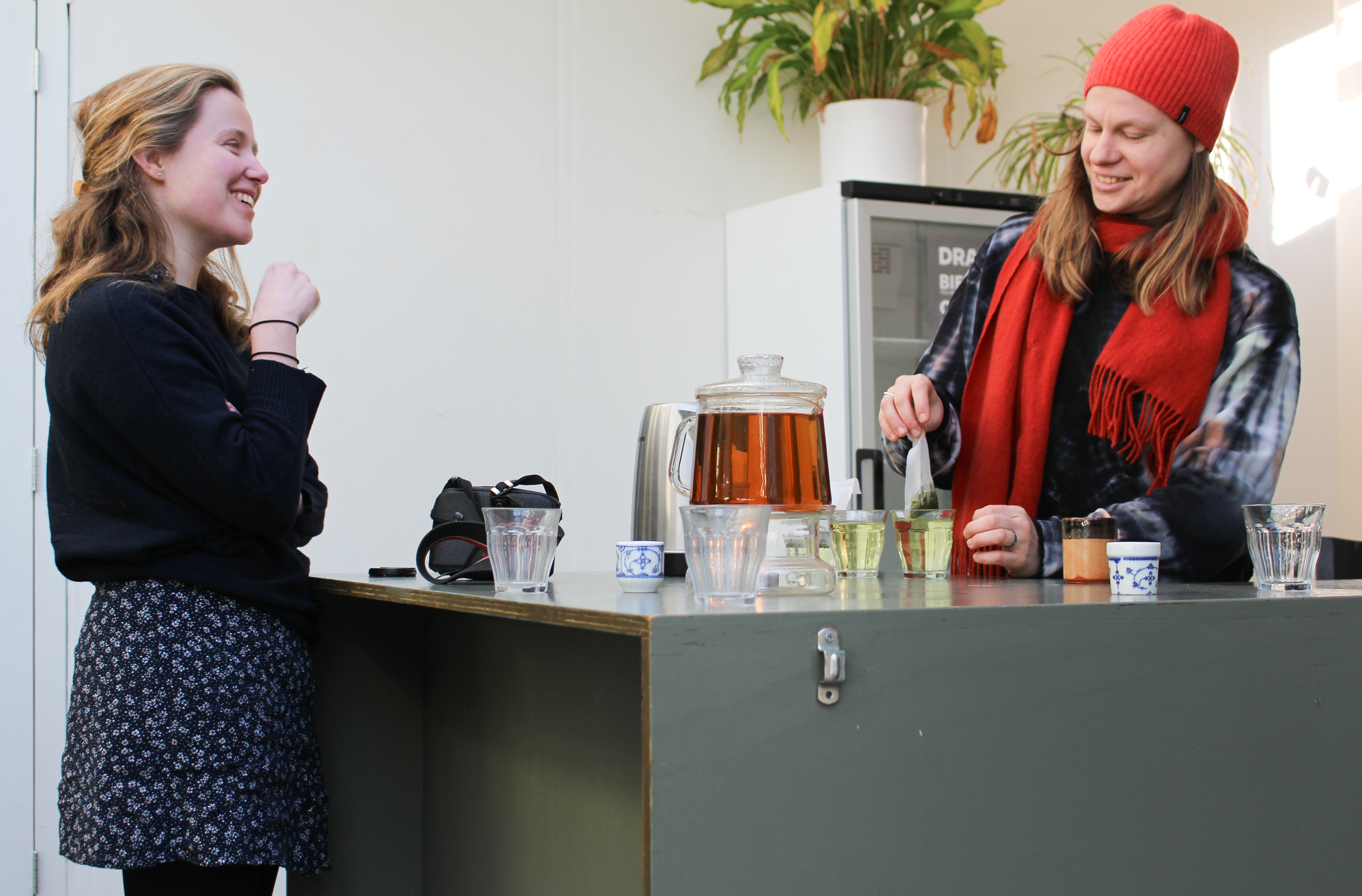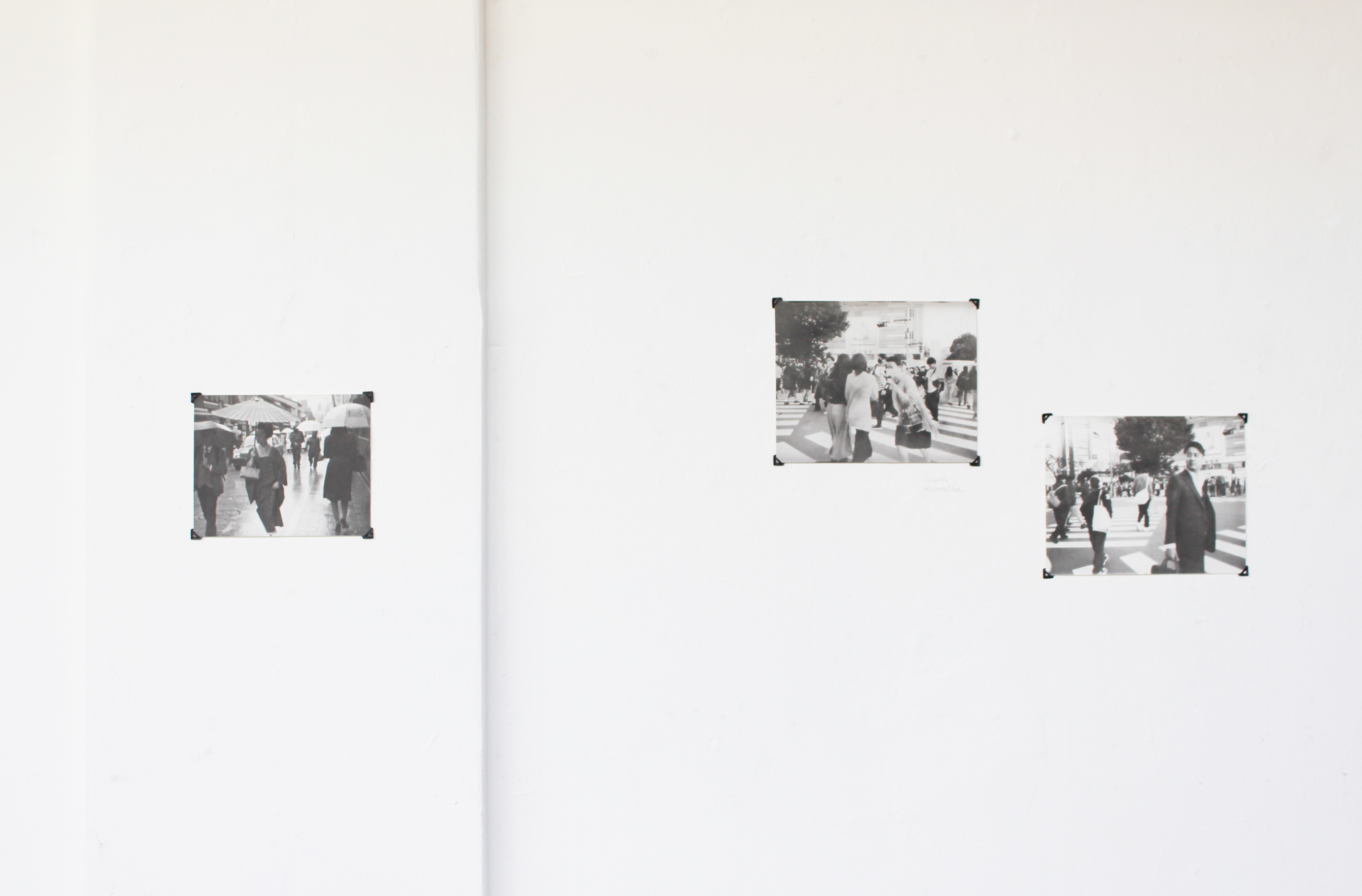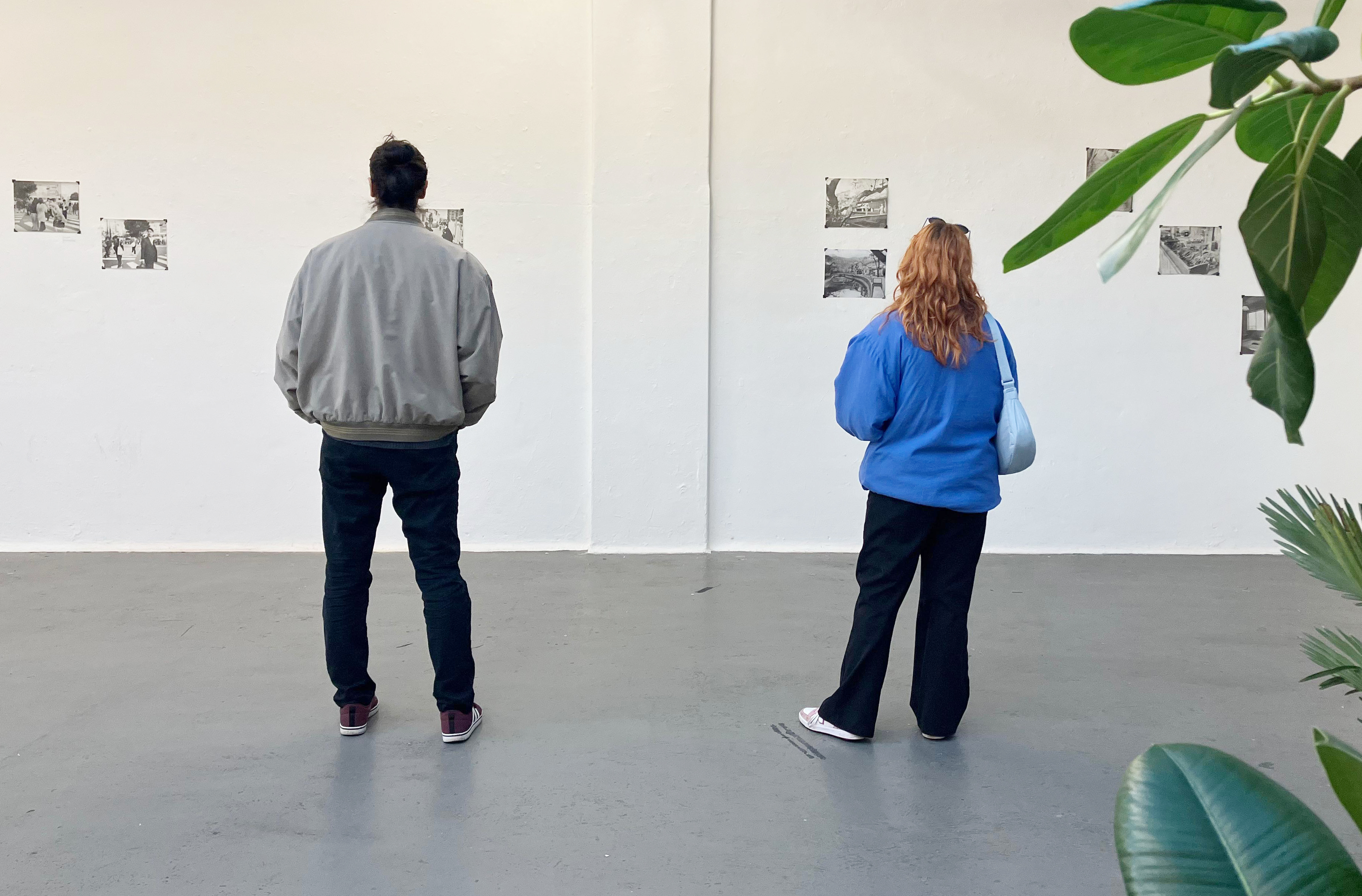Radiating with/from Téra Pechmannová
Parallel brew
02–03-2025, 15:00 - 20:00
︎ guest exhibition
︎ process
︎ knowledges
︎ friendship
‘Radiating’ is a small series of day exhibitions, events, workshops, meet ups in my studio at NS16, Tilburg, which are meant to support a community of experimental photographers, researchers and artists who are based in the Netherlands or are passing by. The irregular program is mainly focused on analogue and alternative photography, process-based art, material research, DIY experiments, and more-than-human storytelling. The incentive is to radiate energy from inside out and from outside in.
‘Radiating’ will show work of fellow artists in person and online in this website blog; it will spread experience, recipes and knowledge of the process; and share resources – material and financial if available.
This series is kindly supported, as part of my practice, by Makersfonds Tilburg.
My first guest is my long-term friend, filmmaker, artist and traveler Téra Pechmannová who will introduce her exhibition Parallel brew. You are cordially invited to join us for the afternoon, between 3 - 8 pm, Sunday 02.03. at studios NS16.

Difference between a conventional and a tea-based
developer, a photo by Téra Pechmannová
Téra Pechmannová is a London-based Czech filmmaker and artist known for her unique analogue photography. By incorporating locally sourced materials like tea leaves as negative and positive developers, she creates captivating visuals that reflect her appreciation for the diverse cultures and landscapes she encounters on her travels. Téra's photographs highlight the beauty of our world and the importance of human connection, reminding us of our shared responsibility to protect the environment and celebrate the unique stories of the communities we visit.
During her stay in Tilburg, she will present the analogue prints and a short movie which is documenting a community of indigo dyers in Japan and incorporating haiku poetry. Visitors will have the opportunity to taste the teas used in her photographs, further enhancing the connection between art, culture, and the environment.
Prints presented during the day are for sale under the conditions agreed with artist.
Follow the artist @teramot

sakura kukicha tea, Japan, photo by Téra Pechmannová
![]()
kukicha genmaicha tea developer, Japan, photo by Téra Pechmannová
![]()
black organic nepal tea, photo by Téra Pechmannová

kukicha genmaicha tea developer, Japan, photo by Téra Pechmannová

black organic nepal tea, photo by Téra Pechmannová
Asking a few questions to
Téra:
1. You have been testing different developers made out of the tea leaves on film as well as paper. Have you discovered any significant differences between them (for example in tonality or development times, or light-sensitive materials that you have been using)?
I have been using two types of paper - RC (resin coated) and fiber-based (baryta) photographic papers. While using tea-based/plant-based developers, I discovered that the RC papers provide a better contrast and stronger blacks, while fiber-based papers give more tonality and a little bit more of staining from the tea leaves. The fiber-based papers also took longer to develop. Personally, I prefer the fiber-based papers also because of their unique texture.
2. Could you share your method and a few tips for others who are preparing to develop the positive prints in the darkroom?
Well, I would definitely recommend to create a time frame for your process because it is time-consuming; and also make your selection of negatives before going to the darkroom. The developer, once mixed, starts to exhaust, therefore you want to be ready. Preparation and patience are the key. I have noticed that first three or four prints come up nicely but then the developer becomes weaker. I tried to add soda during the process or left my prints overnight, but although your prints might develop, the process is much slower and weaker and you can see added stains (as in stains from the weaker developer not the stains from the tea leaves).
3. You have been developing your negatives on your travels, how was it to source, use or recycle the chemistry abroad?
I did not need to source any chemistry because I travelled with all my powders such as soda, vitamin c or a powder fixer. Initially, I was a bit concerned how the border control will react to all those white powders and if I will have to explain anything but it was all fine. Suprisingly, the border control was more suspicious about fruit than white powder.
4. Were there any valuable encounters while practicing the process on the go, that you learnt or appreciated?
Very inspiring was an encouter with the indigo community and workshop Ise-Ai in Inabe. I travelled there to document their process and figured out that, in fact, the dying technique was very similar to using alternative developers, becasue they were too changing pH of the solution (although instead of soda, they were using the wood ash to change the pH).
5. Tea is considered a symbol of culture, hospitality, and friendship (which is very significant in the Asian countries that you traveled through and in The Great Britan where you are based). Is it similar (or different) in the culture you come from?
The culture of tea-drinking in The Great Britan is not as exciting and can come across as barbaric, I would say, and similar is in the Czech republic, where I come from. We are rather beer drinkers...which too could be utilised as a developer. But what I had mainly in mind when I was using the tea as a developer was a ritual to experience culture and tradition with locals or passersby who enriched the moments of my travels.
Images from the exhibition at NS16 by Annemiek Wolse
![]()
![]()
![]()
![]()
![]()
And images by Michaela Davidová
![]()
![]()
![]()
1. You have been testing different developers made out of the tea leaves on film as well as paper. Have you discovered any significant differences between them (for example in tonality or development times, or light-sensitive materials that you have been using)?
I have been using two types of paper - RC (resin coated) and fiber-based (baryta) photographic papers. While using tea-based/plant-based developers, I discovered that the RC papers provide a better contrast and stronger blacks, while fiber-based papers give more tonality and a little bit more of staining from the tea leaves. The fiber-based papers also took longer to develop. Personally, I prefer the fiber-based papers also because of their unique texture.
2. Could you share your method and a few tips for others who are preparing to develop the positive prints in the darkroom?
Well, I would definitely recommend to create a time frame for your process because it is time-consuming; and also make your selection of negatives before going to the darkroom. The developer, once mixed, starts to exhaust, therefore you want to be ready. Preparation and patience are the key. I have noticed that first three or four prints come up nicely but then the developer becomes weaker. I tried to add soda during the process or left my prints overnight, but although your prints might develop, the process is much slower and weaker and you can see added stains (as in stains from the weaker developer not the stains from the tea leaves).
3. You have been developing your negatives on your travels, how was it to source, use or recycle the chemistry abroad?
I did not need to source any chemistry because I travelled with all my powders such as soda, vitamin c or a powder fixer. Initially, I was a bit concerned how the border control will react to all those white powders and if I will have to explain anything but it was all fine. Suprisingly, the border control was more suspicious about fruit than white powder.
4. Were there any valuable encounters while practicing the process on the go, that you learnt or appreciated?
Very inspiring was an encouter with the indigo community and workshop Ise-Ai in Inabe. I travelled there to document their process and figured out that, in fact, the dying technique was very similar to using alternative developers, becasue they were too changing pH of the solution (although instead of soda, they were using the wood ash to change the pH).
5. Tea is considered a symbol of culture, hospitality, and friendship (which is very significant in the Asian countries that you traveled through and in The Great Britan where you are based). Is it similar (or different) in the culture you come from?
The culture of tea-drinking in The Great Britan is not as exciting and can come across as barbaric, I would say, and similar is in the Czech republic, where I come from. We are rather beer drinkers...which too could be utilised as a developer. But what I had mainly in mind when I was using the tea as a developer was a ritual to experience culture and tradition with locals or passersby who enriched the moments of my travels.
Images from the exhibition at NS16 by Annemiek Wolse





And images by Michaela Davidová


